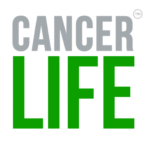Virtual Reality used in Cancer Care …coming soon to a headset near you!
Charlie Coleman here, CEO and founder of Cancerlife today’s video blog, is about some exciting research that just came out at temple from temple university and Dr. Antonio Giordano and D, who with his Italian team created a virtual reality experience that lowered anxiety and stress in patients undergoing chemotherapy.
This is important in two ways; one, it’s a vindication of the power of virtual reality as a method to improve mental health outcomes specific to a disease. We know that getting chemotherapy in an infusion center is stressful for patients. Just the whole experience of going to the doctor with the reality of, Oh my gosh, you know, here I am, again, sitting in the chair. Cancer centers have tried for years to make the experience better. And yet, using this virtual reality headset and experience, they measured, you know, stress levels and anxiety measures and saw incredible outcomes.
So I think that’s exciting just from a VR perspective on, on this type of technology. The second thing is specific to cancer. You know, we know that cancer outcomes have a direct impact on stress levels. Dr. Lutkendorf out of the University of Iowa showed that the more social support or, or more loneliness that patients have the worse, outcomes. Because then the stress level induces tumor growth. \
Whatever we can do to lower stress for patients is a good thing for cancer Carol across the board. The second thing is that many patients are experiencing stress levels, not just in the infusion chair but when at home. Right? So, you know, they typically, and it, a lot of the times, it’s two in the morning in our experience at castle life.
A lot of the times when patients express their extreme level of, of anxiety and worry, you know, it’s because it’s two in the morning and it’s the night before they’re getting there, you know, major scan or they’re getting results of a blood test, or, you know, a genetic marker. These are all critical decision points for patients. And they’re experiencing this excitement, anxiety, and stress when no one else is around right there. They’ve got no options to engage with, you know, a social worker or some type of coach. You know, although our patients can interact with each other late, late in the, in the middle of the night. What’s interesting with this VR technology, this is something that I assume over time will be scalable to the home where patients can feel that anxiety and then, you know, put on the headset and go through some breathing exercises, some mindfulness and instead of just a visual recording, they’ve got a full virtual reality experience. That’s going to calm them down.
So I just think it’s really exciting information and, and research and looking forward to talking to Dr. G about potentially partnering with his organization and scaling this technology. So anyway take care and best of all to my wonderful members of Cancerlife.
